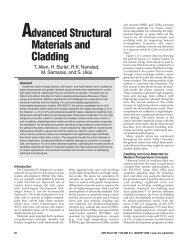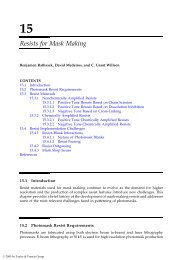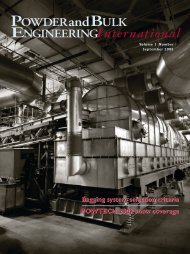Modeling of Biogas Reactors
Modeling of Biogas Reactors
Modeling of Biogas Reactors
You also want an ePaper? Increase the reach of your titles
YUMPU automatically turns print PDFs into web optimized ePapers that Google loves.
164 6 <strong>Modeling</strong> <strong>of</strong> <strong>Biogas</strong> <strong>Reactors</strong><br />
Fig. 6.1 Elements <strong>of</strong> a mathematical model for a biogas tower reactor (BTR).<br />
inhold (1994). The typical features <strong>of</strong> the BTR are its tower shape, the modular structure,<br />
and the internal installations. Gas collecting devices are used to withdraw the<br />
fermentation gas from different levels <strong>of</strong> the reactor. These gas collectors separate<br />
the reactor into modules along the height. By means <strong>of</strong> these devices, which are<br />
equipped with valves, the gas loading and the mixing intensity can be controlled separately<br />
in each module. To avoid flotation <strong>of</strong> active biomass due to excessive gas load,<br />
an effective biomass accumulation is generated within the reactor.<br />
The biomass is represented in this reactor by free suspended microorganisms<br />
which are associated in the form <strong>of</strong> sedimentable more-or-less loose pellets (flocs).<br />
One very important point, when modeling such a reactor, is to describe the local distribution<br />
<strong>of</strong> active biomass within the reactor (Section 6.4.2).<br />
In a mathematical model the mixing behavior <strong>of</strong> the liquid phase is <strong>of</strong> similar importance<br />
(Section 6.4.1). The mixing <strong>of</strong> the BTR is caused by internal airlift loop<br />
units. Since the reactor is designed in the shape <strong>of</strong> a tower and is only fed at the bot-






